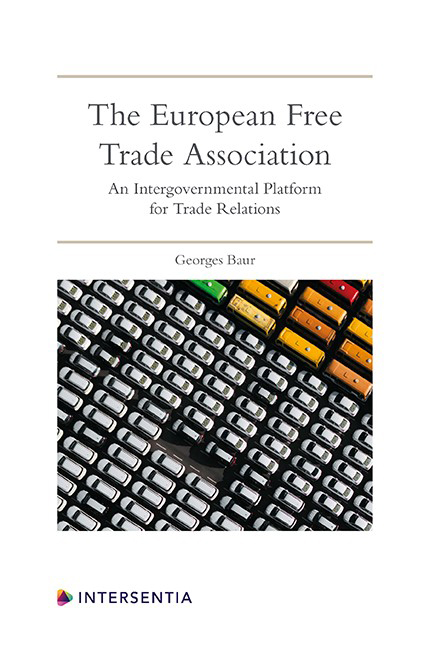Book contents
- Frontmatter
- Foreword
- Preface
- Acknowledgements
- Contents
- List of Tables and Figures
- Chapter 1 What is EFTA?
- Chapter 2 Short Historical Overview
- Chapter 3 Substantive Fields of Activity of EFTA
- Chapter 4 EFTA Institutions, Membership, Scope and Other General Provisions
- Chapter 5 Trade Relations with Third Countries and Groups of Countries
- Chapter 6 The Relations between the EFTA States and the EU/EEA
- Chapter 7 Conclusion: EFTA Membership for the UK Post-Brexit?
- Convention Establishing the European Free Trade Association
- Annex K. Free Movement of Persons (Chapter VIII)
- Annex T. Arbitration (Art. 48)
- Index
- About the Author
Chapter 3 - Substantive Fields of Activity of EFTA
Published online by Cambridge University Press: 21 July 2020
- Frontmatter
- Foreword
- Preface
- Acknowledgements
- Contents
- List of Tables and Figures
- Chapter 1 What is EFTA?
- Chapter 2 Short Historical Overview
- Chapter 3 Substantive Fields of Activity of EFTA
- Chapter 4 EFTA Institutions, Membership, Scope and Other General Provisions
- Chapter 5 Trade Relations with Third Countries and Groups of Countries
- Chapter 6 The Relations between the EFTA States and the EU/EEA
- Chapter 7 Conclusion: EFTA Membership for the UK Post-Brexit?
- Convention Establishing the European Free Trade Association
- Annex K. Free Movement of Persons (Chapter VIII)
- Annex T. Arbitration (Art. 48)
- Index
- About the Author
Summary
INTRODUCTION
FREE TRADE ZONE
EFTA's first objective was to create a classical free trade zone, i.e. abolishing or at least minimising tariff s on trade between its member states. At the beginning of the 1960s, trade in industrial products still dominated. From the end of the 1990s, however, this was no longer sufficient. More and more services were being provided on a cross-border basis, investment required rules to protect them, and intellectual property had become increasingly important in the context of ever-growing trade relations with the then emerging markets like China and India. The establishment of the World Trade Organisation (WTO) in 1994 shows this with great clarity. In order to take this development into account, the EFTA Convention was revised in the year 2000 and new areas, such as services, were added.
NEED FOR ADAPTATION
From 1972, EFTA was increasingly used as the EFTA states‘ basis for their relations with the EU. That development started with the conclusion of the EEC-EFTA free trade agreements and led to the conclusion of, on the one hand, the EEA Agreement in 1992 and, on the other, Switzerland's bilateral agreements in 1999 and 2002. Following this, EU nationals and enterprises were de facto in a more favourable situation in either the EEA or Switzerland than citizens or enterprises from the other EFTA states respectively. For example, citizens of Iceland and Norway – Liechtenstein being a case apart – were not entitled to the rights conferred by Switzerland on EU citizens in the area of the recognition of professional diplomas.
Already in the course of the negotiations between Switzerland and the EU on a first package of sectoral agreements (Bilateral Agreements I; BAs I), the Swiss government indicated that it was ready, at the end of these negotiations, to offer equal treatment to its EFTA partners. Hence, at the meeting of the EFTA Council at ministerial level on 12 and 13 December 2000, the EFTA states decided to mutually treat other's EFTA citizens and enterprises in the same way as they were treated in the context of the EFTA states‘ respective relations with the EU. Furthermore, and as mentioned above, developments in multilateral trade, fi rst and foremost the WTO, had to be reflected as well.
- Type
- Chapter
- Information
- The European Free Trade AssociationAn Intergovernmental Platform for Trade Relations, pp. 21 - 54Publisher: IntersentiaPrint publication year: 2020



